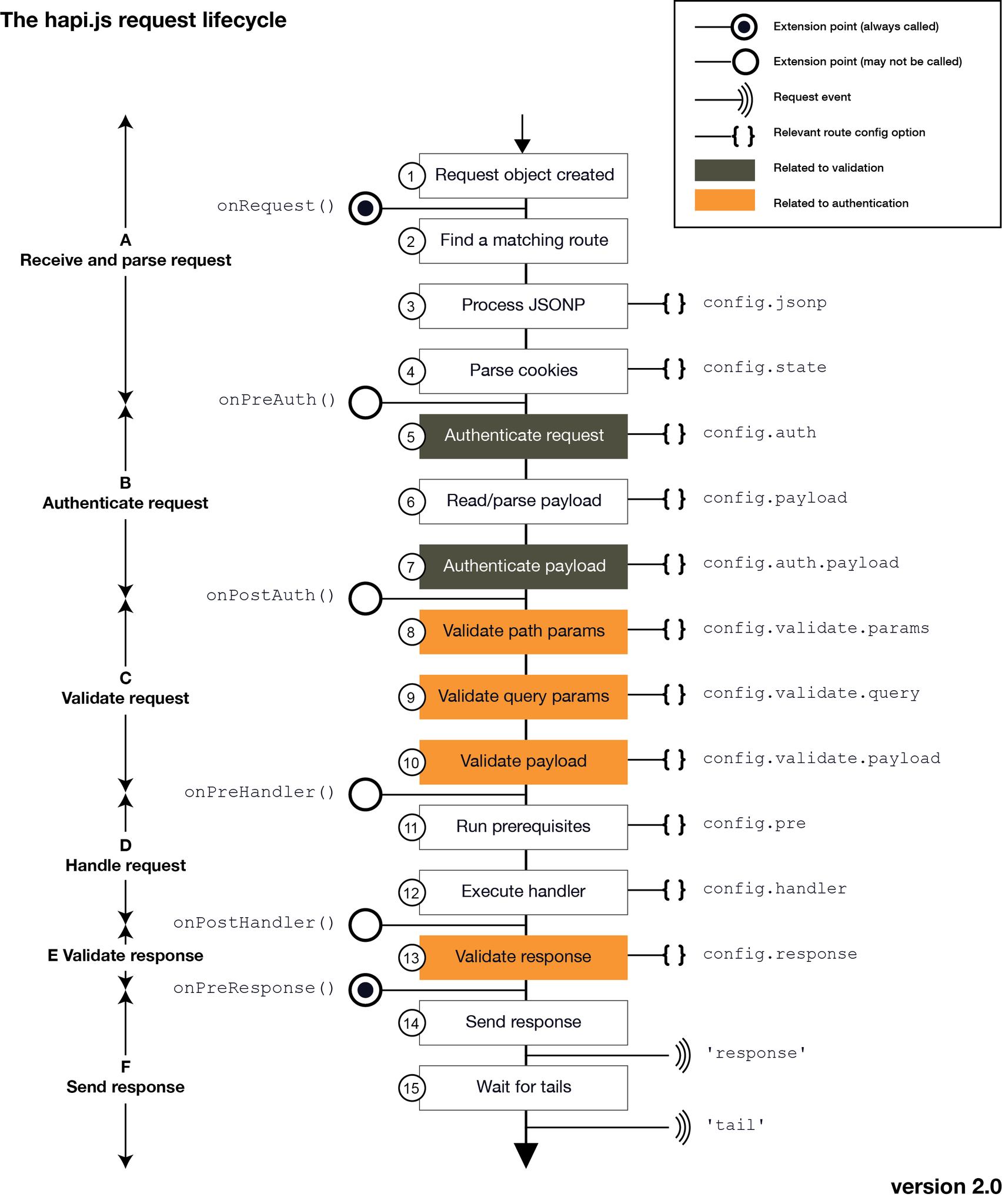Hapi
TODO
https://stackoverflow.com/questions/12487416/how-to-organize-a-node-app-that-uses-sequelize
Lifecycle

plugins
Methods and decorations do have different intended purposes. In short:
- plugins should utilize decorations to extend the framework with additional functionality/configuration.
- plugins should utilize methods in order to implement application business logic, reach out to external services, and interface with hapi's caching layer.
Examples
- vision providing the ability to configure a view manager and render templates using a view manager
- hapijs.com's services that reach out to github to render the API documentation and cache the result
Boilerplates
https://github.com/rjmreis/hapi-api
├── api/
| ├── handlers/
| | └── home.js * Sample handler
| └── index.js * REST routes
├── config/
| ├── manifest.js * Server configuration
| └── secret.js * Secret key
├── test/
| └── api.js * API test
├── server.js * Server definition (uses the Glue plugin to read a manifest)
├── auth.js * Auth strategies
└── package.json
以 server.js 作为入口,配合 auth.js 的授权策略,将具体的 api 丢到 api 目录,结构还是相当清晰的。 config 和 test 遵循了大部分框架的配置,比较有意思的 config/secret.js,Secret key 在部署的时候需要配置的,很多框架是没有做这个的。
从这个目录看,比较适合微服务类的小而美的 api 服务。
授权
scope
hapi scope blog
Authentication and Authorization
acl
每一项资源,都配有一个列表,这个列表记录的就是哪些用户可以对这项资源执行 CRUD 中的那些操作。
当系统试图访问这项资源时,会首先检查这个列表中是否有关于当前用户的访问权限,从而确定当前用户可否执行相应的操作。
rbac
rbac 是把用户按角色进行归类,通过用户的角色来确定用户能否针对某项资源进行某项操作。 rbac 相对于 acl 最大的优势就是它简化了用户与权限的管理,通过对用户进行分类,使得角色与权限关联起来,而用户与权限变成了间接关联。 rbac 模型使得访问控制,特别是对用户的授权管理变得非常简单和易于维护,因此有广泛的应用。
More
lab - Node test utility.
blipp - Simple hapi plugin to display the routes table at startup.